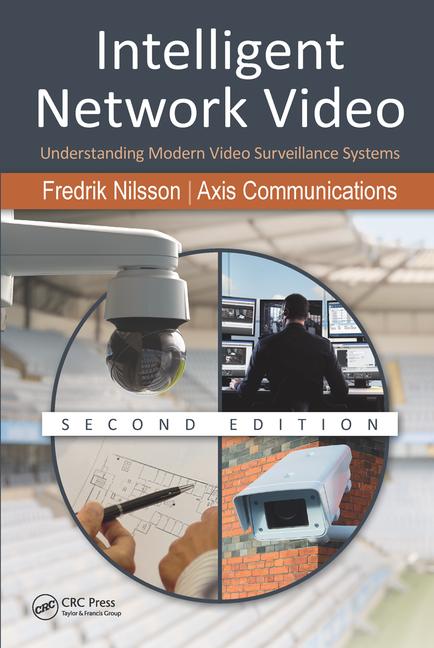More than 100 participants attended The Monitoring Association (TMA)’s virtual OPSTech 2021 meeting, held Nov. 30 through Dec. 3. Highlights included a full day dedicated to the growing field of video services; a session on risk management focused on how to avoid litigation; and a keynote presentation by a Microsoft executive on how artificial intelligence is poised to transform the industry.
Like many industry events, OPSTech went virtual in 2020 during the growing COVID-19 pandemic. TMA leadership had planned for an in-person this year in Charlotte, N.C. until COVID-19 cases began to rise. TMA plans to return to a live event in Charlotte in late 2022.
Here’s a synopsis of some of the highlights:
A Day Dedicated to Video
The event’s kickoff panel, “Introduction to Video Monitoring,” was moderated by Chris Brown, CEO, Immix, and featured Doug Jackson, director of remote video, Sight Logix; Avi Lupo, co-president, DICE Corp.; and Brandon Niles, director of operations, Acadian Monitoring Services.
The panelists looked back on how the market has changed over the past 20 years, marked by the growing use of technology like artificial intelligence and increased customer demand for video services as part of the monitoring process.
Until about 20 years ago, security systems primarily involved fire and burglar alarms, said Lupo, who was a cofounder of OzVision, a pioneer in the video-as-a-service (VaaS) industry. Video services were a tough sell due to concerns about liability, he said. This perception began to change when TMA began establishing video committees and verification standards, and today, advances in technology are transforming the market. “Today, IoT is everything, with sensors in refrigerators, appliances, and vehicles. … (in monitoring centers), we have the ability to manage unlimited IoT devices to get information in real time, post it in front of an operator, and connect to a 911 center. It’s all about the IoT devices, not necessarily security cameras.”
The shift in customer demand means monitoring companies must offer video services or face tough competition from other industries, Jackson said. “If you’re not adding video but all your competitors are, you’ve got a negative differentiator,” he said. “DIY companies are becoming bigger and forcing all these integrators and installation companies to be at their top level. To avoid market disruption, you must provide technology that isn’t as prone to disruption. (Video is) a great way to differentiate yourself and not be disrupted by market disrupters.”
Technological advances are making today’s video services more attractive, affordable, and scalable to customers, who are increasingly adding them to their monitoring systems. Eight years ago, “the market wasn’t there, but in the past four years, I couldn’t slow it down even if I wanted to,” Niles said. “The sales side and technology are finally there, and AI is helping reduce cost to scale operationally at a much better rate…. All alarm automation platforms have video add-on and technology to include, which might not be as expensive as a whole new video monitoring solution. Some just want one camera, which comes with its own VMS.” And while additional expenses may include a need for the customer to increase bandwidth, “it’s still more scalable and affordable than on the alarm side,” he added.
Managing Customer Expectations
In another discussion, “Managing and Setting Customer Expectations for Video,” panelists examined what services they can and cannot provide to customers, and how to educate consumers about them. Speakers were Joseph Pereira, vice president global security monitoring, STANLEY Security; Nicole Pitts, account director Americas, Calipsa; Sonny Tai, CEO, Actuate; and Tommie Van Fossen, director of business development visual verification, Optex.
Video monitoring technology is transforming the security industry, making now the perfect time to get into video, Tai said. The industry is currently at a crossroads where the technology has matured, but there is still an early adopter advantage for security businesses to offer a differentiated service.
The big game changer for video services is AI, Tai added. “AI is important to video monitoring because humans can’t be expected to effectively monitor hundreds of cameras,” he said. “AI sifts out most noise so operators can focus on potential real threats. AI doesn’t get tired or complacent.” However, even the best AI is not infallible, and while it can help monitoring centers become more efficient and profitable, human intervention and interpretation is still essential. This fact needs to be communicated to customers so they will have realistic expectations about video’s current capabilities.
Major considerations in this discussion are the number of signals included, camera clarity and pixilation, video availability, and cloud storage, Van Fossen said. Pricing structures for video services can range widely, based on a number of variables. This can include alarm event monitoring versus video, whether there is the capability of guard response, talk down, conversations, listening from site, remote access to devices, the number of events per camera per month, and more.
The Growing Role of AI
In “Video Analytics and Artificial Intelligence Demystified,” panelists discussed the basics of this new technology, including how computer vision works, the current capabilities and limitations of video analytics, and the future role of these technologies in the monitoring industry. Panelists were Jason Caldwell, director, marketing/business development/guard force accounts at Immix; Avi Lupo, co-president, DICE Corporation; Boris Ploix, CTO, Calipsa; Sonny Tai, CEO, Actuate; and Charles Volschenk, Davantis Technologies.
Ploix explained that while AI has been around for decades, it has seen many evolutions over the last 10 years, primarily in improved efficiency in hardware and software that allows users to train AI’s neutral networks in a matter of hours. This means AI can monitor alarms and recognize audio and speech, which in turn enables data analysis. But while AI’s capabilities may be impressive, there is little evidence that in its current iteration it can replace human thought, he said. “At the beginning, and for a long time, machine learning and artificial intelligence were thought to be like a human being,” Ploix said. “When people stopped thinking that way and focused on automating tasks, things changed.”
Human interpretation still trumps AI in critical areas, especially in “connecting the dots,” he said. Using a surrealistic Salvador Dali painting as an example, Ploix pointed out that while the human eye knows the image isn’t connected to reality, a computer struggles with making sense of it. Even something as simple as a mirror in an image can confuse AI, he said. “If AI is sufficiently trained, it might recognize aggressive behavior, but it might stop there and not recognize the emotional aspects,” he added. For instance, a famous photo of the Beatles having a good-natured pillow fight could confuse AI into thinking the photo depicts aggression because the computer doesn’t understand context, he said.
AI’s ability to sift through hours of video from multiple cameras is making video more attractive to customers, and a profit opportunity for integrators. “The average customer looks at us like paying for insurance and taxes, but video that works brings all new menu of services that brings true peace of mind as a service you can provide them,” Lupo said. “In three to five years, it won’t be an option for central stations not to provide video services. … Video analytics are the fuel of the future of this industry.”
The Changing Landscape of Privacy Regulation
Later in the week, a panel on “The Changing Landscape of Privacy Regulation” provided information around privacy legislation including enhanced compliance, regulatory reporting, and defensive protocols. Speakers were Kelly DeMarchis Bastide, partner at Venable LLP, and Frank Cona, vice president and deputy general counsel, IP and privacy at ADT.
Bastide explained the basics of the California Consumer Privacy Act (CCPA), the United States’ first comprehensive general privacy law, which regulates personal data collection, sharing, and processing by businesses with more than $25 million in annual revenue, or 50 percent or more of revenue coming from the sale of personal information.
But while CCPA is specific to California, Bastide predicted the landscape will change dramatically in 2023, when other states, including Virginian and Colorado, begin enforcing their own privacy acts. Currently 35 other states are considering similar privacy legislation. Also in 2023, California will amend the CCPA, expanding consumer rights even further. Based on these actions, it is extremely likely that all 50 states will enact some form of privacy legislation in the immediate future, she said.
Keeping track of constantly evolving privacy laws is especially daunting for businesses that operate in all 50 states, Cona said. “We do an annual privacy review within our department and regularly review standard contract terms and internal controls. We also have an ongoing dialogue with business stakeholders and operational folks because there is a lot of differentiation between laws and need to be translated into what it means for the business,” he said.
In the security and monitoring industry, businesses must be aware of where the data they collect flows, he stressed. While ADT is primarily a North American business, the company works with business partners around the world and in the European Union, which has a different set of privacy regulations to comply with under the General Data Protection Regulation (GDPR). For instance, mingling data between the EU and the United States could come under scrutiny, so it’s important for organizations to maintain a dialogue with the operational business people, he said.
Bastide echoed the importance of maintaining documentation and records on data flow, especially in updating these processes if they’re out of date. This can be especially challenging since marketing, human resources, and other departments may be contracting with vendors in different ways. However, all information must be in a central repository so companies can conduct data mapping efficiently and effectively, she said.
Emerging technology will also have an impact on privacy regulation. While in current privacy regulations and consent laws cover email, phone calls, and other more traditional communications, this list will eventually expand to include new technology like VOIP and other electronic communication channels, Cona said. Further, while most privacy laws focus on monetization of data, new technological advances like facial recognition and biometric data raise concerns about transparency and are sure to be the subject of future iterations of privacy laws, he added.
AI & Digital Transformation
In a keynote address on “Artificial Intelligence: Your Digital Transformation Simplified,” Rouzbeh Aminpour, principal manager, Microsoft Azure Vision AI, Microsoft, described the state of computer vision as it stands today and the direction Microsoft is taking to empower industries it serves in their digital transformation journey — specifically in the detection and monitoring space.
He observed how AI has evolved over the past 10 years from theory to practical application, driven by innovation in the field, both on the hardware side, and robust computing such as cloud on the edge. “More important, what’s coming is more breakthroughs happening as we speak to hardware partners and leverage to push more transformation,” he said.
Examples of advances fueled by AI include frictionless checkout in retail, fintech decisions powered by AI and big data, and increased workplace safety in manufacturing, he said.
The monitoring industry has traditionally relied on many passive systems, with “millions of cameras out there today mostly recording and dumping amazingly precious information into some sort of storage bank,” Aminpour said. Humans must cull through this huge volume of data to find a specific event. “The response in general is either very slow, reactive, or has been very manual, such as security teams sitting in front of monitoring looking for something to happen,” he said. “The most powerful way AI can transform this is for us to improve at the observation layer with the hope that as we speed up in our ability to observe environments and allow you to actually see things in real time and at all times.”
Unlike humans, cameras can monitor everything at all times, and then notify security guards in real time via a mobile device if there’s a problem. The availability of hardware that is widely available at enterprise scale is what makes this possible, combined with AI to power a much more robust observational layer. “The result is doing a better job of deterring, delaying, and responding,” he said.
While computer vision is inspired by the human eye, tools like AI and biometrics help computers not only identify people and objects, but understand context, Aminpour said “With computer vision, people, places, and things are what we focus on. We want to understand not only that there’s a person in a warehouse walking to the end of an aisle, but also want to understand objects like a forklift so we can program an alarm when a person gets too close — so objects are important.”
With computers still working on the ability to understand and recognizing objects, the fastest way to get up to speed is not to solve for the entire world, but to approach this by specific industry and solve for objects that are relevant to each, Aminpour said.
For example, using four cameras providing details at the pixel level provides viewers with a 3D impression, reconstructing the physical space in the digital world and removing all unnecessary background so only relevant information is displayed, he said. This method is currently being used in warehouse settings to improve quality control in real time and reduce fail rates.
Over the past five years, computer vision and more advanced cameras have become sophisticated enough to observe a ship in the middle of the ocean through a camera and see that there’s a person standing under a crane with a heavy load —providing the ability to send a warning to him. “We’re seeing these kind of use cases where we’re getting to the point in partnership with network camera providers, edge computing folks, where resolution is good enough so we can leverage those devices to identify people we may have missed with a small number of pixels. We’re moving AI toward AI for good, for being meaningful to actually doing things that enable humans to live better and safer lives.” —Laura Mazzuca Toops, SDM Managing Editor









